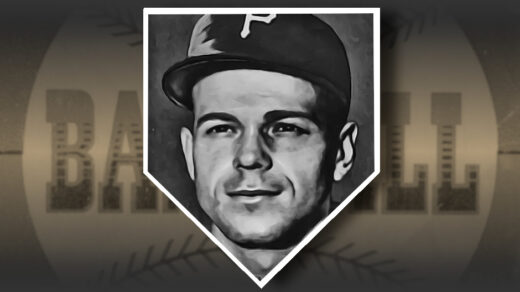The Atlanta Braves finished 1992 with perhaps the most complete pitching rotation of the past century. Tom Glavine, John Smoltz, Steve Avery, and the newly acquired Greg Maddux could shut down any team with each able to carry more than 200 innings over the course of a season. The fifth potential starter was a top prospect named David Nied. Nied impressed the sport with a sub-2.00 ERA and nearly one strikeout per inning in his brief 1992 debut.

Following the conclusion of the postseason, MLB conducted an expansion draft to fill out the rosters of the newly created Colorado Rockies and Florida Marlins. Existing teams could exempt 15 players from being taken by the new clubs by designating them as “protected.” Atlanta was in the midst of a series of deep playoff runs and suffered an embarassment of riches. With the draft fast approaching the front office realized that their roster would lose some top level talent. The final protected roster spot fell to a toss-up between multi-sport star Deion Sanders and Nied, both of which looked likely to be snapped up by one of the new teams. Atlanta chose to protect Sanders and the Colorado Rockies pounced on Nied with the first pick of the draft.
Nied’s selection made him the first member of the Rockies and the de facto anchor of the pitching staff. He started off the team’s first game on the short end of a 2-0 pitching duel with Doc Gooden. He didn’t quite return to his late-1992 form and spent the next few years trying to maintain average performance against a series of arm injuries. He signed with the Cincinnati Reds at the conclusion of the 1996 season but elected to retire rather than restart his career with the team’s AA affiliate. He returned to his family’s industrial business in Grand Prairie, TX and married a contestant from the reality-television show The Bachelor.

| STATS | IP | W-L | SO | SO/9 | BB | OPP. AVG | FIP | FIP- | WAR |
|---|---|---|---|---|---|---|---|---|---|
| At Coors Field | 97.5 | 7 – 9 | 61 | 5.6 | 37 | .296 | N/A | N/A | N/A |
| Away from Coors | 143.7 | 10 – 9 | 85 | 5.3 | 68 | .254 | N/A | N/A | N/A |
| Career | 241.2 | 17 – 18 | 146 | 5.4 | 105 | .281 | 4.60 | 106 | 2.4 |
LET’S TALK COORS FIELD PARK EFFECTS
Nied’s career stat lines show mixed success at the Major League level. He posted a 14-18 record for a team that lost a majority of its games over the course of his career. How much of Nied’s performance was the result of playing in a hitter friendly ballpark?
Park effects are a real phenomenon at Coors Field. Atmospheric conditions lend themselves to batted balls travelling slightly further and at higher speeds. Designers of the park sought to remedy this by giving the field the deepest fences in the majors with large foul areas. Breaking balls thrown by pitchers don’t shift as easily as they do at sea level, resulting in a greater chance of hanging a curve in front of an awaiting batter. Nied pitched prior to the pre-game storage of baseballs in a climate-controlled humidor so he would have been exposed to the full effect of any environmental factors.
I broke out home and away stats and backed out his time with Atlanta to gauge how he performed outside of Denver. Nied actually pitched the majority of his career outside of Coors Field, generating a 10-9 record. Opposing batters hit .296 against him in Colorado and a much lower .254 in other parks. So far it appears park effects may have had detrimental impact on his performance. However, Nied performed better in 1:1 matchups at home. He struck out more batters per inning, gave up fewer walks, and allowed less home runs on both an absolute and per inning basis.
FanGraphs provides calculations of adjusted fielding independent pitching (FIP-), a metric that normalizes performance for park effects and focuses on outcomes not dependent on other fielders. Average pitchers across eras and parks generate a FIP- score of 100. Nied’s career adjusted FIP was 106, indicating somewhat below average performance even after stripping out the effects of Coors Field.
Nied’s entire career consisted of 241 innings of work, a figure less than what Greg Maddux logged in just the 1992 season. The final two injury-shortened seasons of his career consisted of just over 9 innings of work, all of which appeared to be highly affected by his health. In the end, he appears to be more of a victim of elevated expectations after an impressive 1992 debut and progressing injury rather than the environmental conditions of Denver.
Other David Nied or Park Effects Reading:
- Four Baggers and Foreclosures – Junk Wax Prospector David Nied: An entertaining blogger talks about his David Nied collection and displays a wide assortment of cards.
- The Coors Field Problem: A writer analyzes differences in pitch movement both at and away from Coors Field
- The Hardball Times – The Other Coors Effect: Teams across the league may be tailoring their fields for an offensive advantage.
- Fangraphs discussion of FIP and FIP-









